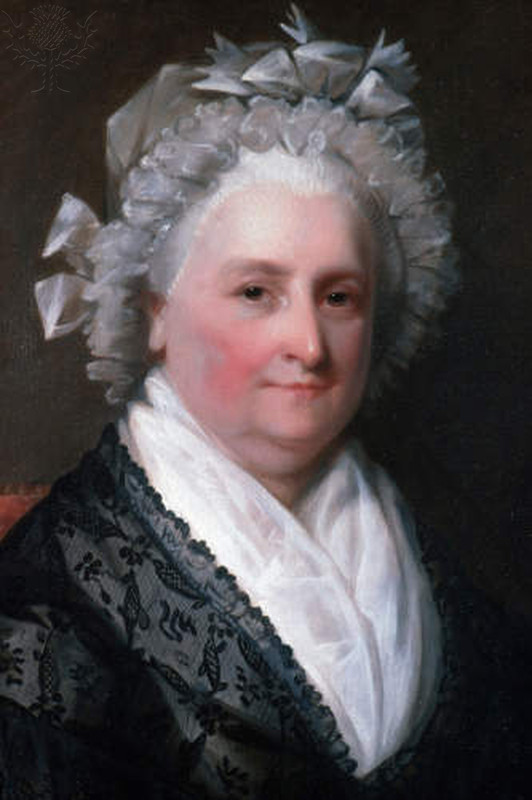MARTHA DANDRIDGE CUSTIS WASHINGTON was born into a world of elite social custom and privilege in the 1730s. Little did she know that she would marry twice, give birth to four children — losing two of them to illness in childhood — and bear witness to the Revolution and the creation of a new nation.
This site will allow you to explore the contours of Martha Washington’s life while also providing a window to women’s lives during the 18th century, including women’s access to property and education, their role in the Revolution, their thoughts on the promises of rights called for in the founding documents, and their everyday experiences of marriage, motherhood, labor, sickness, and death.
American first lady (1789–97), the wife of George Washington, first president of the United States and commander in chief of the colonial armies during the American Revolutionary War.
As the wife of the Continental Army’s commander-in-chief, Martha Washington was integral to a fundraising campaign that called upon women to donate money, clothing and supplies to the Revolutionary cause. During the American Revolution, General Washington had named a row-galley in the Continental Navy after his wife, calling it the Lady Washington.
She set many of the standards and customs for the proper behavior and treatment of the president’s wife. Martha was widely hailed and often feted along the route, and she became known to Americans as “Lady Washington.” When Philadelphia became the seat of government in 1790 and Washington moved to a house on High Street, Martha’s hospitality became even more elaborate.
Although the first lady’s role has never been codified or officially defined, she figures prominently in the political and social life of the nation. A representative of her husband on official and ceremonial occasions both at home and abroad, the first lady is closely watched for some hint of her husband’s thinking and for a clue to his future actions.
Martha was also known as a regular and active letter writer, and a collection of her surviving letters are housed in the collections of the Mount Vernon library. Unlike the majority of women in Virginia at this time who were not literate, Martha learned both to read and write at an early age.
Throughout her entire life, Martha found pleasure and solace in reading. She received an education traditional for young women of her class and time, one in which domestic skills and the arts far outweighed science and mathematics. George Washington and Martha Washington married at January 1759, she joined Washington at Mount Vernon, his plantation on the Potomac River.
Washington later resented suggestions, which were undoubtedly true, that his wife’s considerable property had eased his life in the early years of their marriage. At Mount Vernon Martha became known for her graciousness and hospitality. Martha Washington was known as an excellent hostess. Guests invariably commented on her cheerful disposition, warm manners, and thoughtful attention to her guests.
Although she did have the assistance of a large staff of household slaves and white servants, Martha, together with her husband, set the tone, established the pace, and provided the ambiance for her guests. Martha won over the skeptics.
During the American Revolution, General Washington had named a row-galley in the Continental Navy after his wife, calling it the Lady Washington. Music was composed in her honor. Much later, during the First World War, a troop transport ship would be baptized the USS Martha Washington.
Martha Washington was the first woman to appear on U.S. currency, on paper money printed in the years 1886, 1891, and 1895. She was also the first woman to appear on a U.S. postage stamp, initially in 1902, with other stamps following in 1923 and 1938. Martha Washington and her husband both died at Mount Vernon, with Martha dying on May 22, 1802, slightly over two years after her husband.
Martha was important in the History of the American Revolution because she helped patriots and she set the precedents for all of the future First Ladies. Her actions, hosting of parties, handling of some correspondence and side projects all set the tone for her successors.
Works Cited
Brady, Patricia. Martha Washington. [Electronic Resource] : An American Life. New York : Viking, 2005.
Haugen, Brenda. Martha Washington. [Electronic Resource] : First Lady of the United States. Minneapolis, Minn. : Compass Point Books, [2006], 2006.

